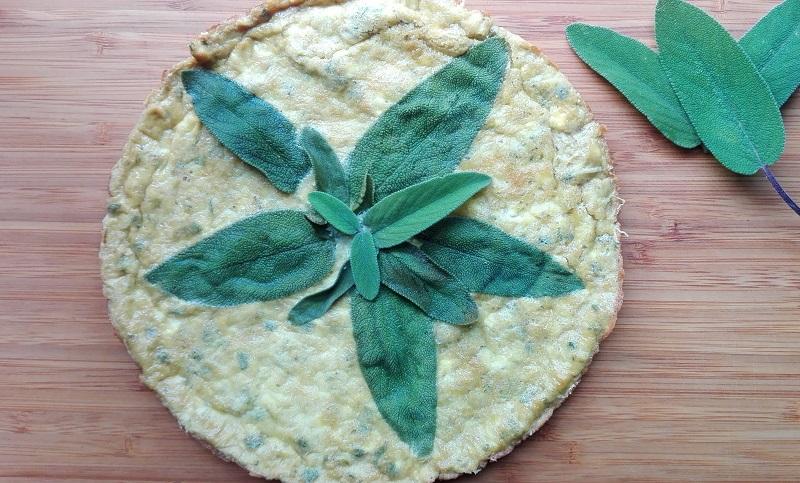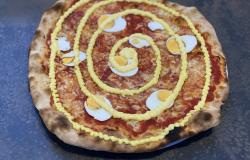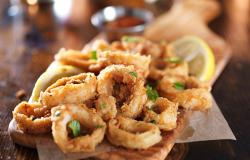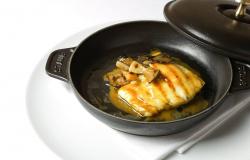Frittata ‘la Salviata’ – Sage Frittata

If you’ve got a backyard sage plant, soon enough you’ll be up your elbows in fresh leaves. This resilient aromatic perennial—long used in cooking, even longer in herbal medicine—was known as salvia in the ancient Roman world, where it enjoyed an almost panacea-like status. Harvested according to a peculiar ritual that dictated one wear white robes, have clean, bare feet, and use no tools, sage served both practical and sacral functions in Roman society. It has since lost little of its therapeutic reputation and remains one of the most valued plants in herbal medicine practices. Interestingly, the word salvia, also its Italian name, shares its lineage with the Italian words salvare (to save), salvo (saved), salvezza (salvation, safety), and salute (health, well-being, the toast ‘to your health’)—from the Latin salvus (safe, saved, well) and salus (health, prosperity).
Widespread in the Mediterranean, the highly versatile garden or common sage (Salvia officinalis) is a culinary superstar, used in everything from liqueurs, sauces, and infused oils to seasonings for roast meats and fish, and it stands out especially in the Italian classics saltimbocca alla romana and burro e salvia sauce for gnocchi, gnudi, or ravioli. The recipe here is for a simple frittata, one with a rather high sage content—hence its nickname, la salviata. Enjoy!
Ingredients for two:
Use half of the sage to make a paste: finely chop the leaves and place in a mortar with the coarse salt and peeled garlic clove. Pound to a chunky paste. Transfer the paste to a bowl and whisk together with the eggs, ricotta, and half the Parmesan until thoroughly combined.
Pre-heat the oven to 180° C and set for the upper heating element only.
Heat the olive oil in an oven-proof pan. Don’t use too much oil—just enough for a thin layer covering the bottom of the pan. Pour in the frittata batter. Cook on low for about 5 minutes. When the edges start to turn slightly golden and crunchy but the top is still uncooked, remove from the heat and arrange the remaining sage leaves on the frittata. Dust with the remaining grated cheese and transfer the pan to the top rack of the oven for no more than 2 or 3 minutes. Keep an eye on it to prevent over-cooking. Remove from the oven and dust with fresh ground black pepper.






